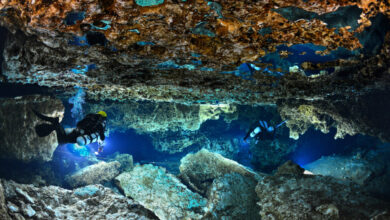Scientists Discovered An Ancient Civilization Frozen In Ice That Shouldn’t Exist

Many archaeologists, about 60 major scientists, have published dozens of papers on the Younger Dryas hypothesis. However, there is also a group of scholars who oppose this hypothesis. According to conventional evolutionary theory, the lineage of Homo sapiens originated from an ancestral line that existed about 6 million years ago, not much further back. During this time, Antarctica is believed to have been as cold and frozen as it is today, although researchers have found evidence that Antarctica was once green and teeming with life. The question is whether that green period occurred during the lifetime of humans.
Graham Hancock has an interesting theory about an ancient civilization under the ice in Antarctica that goes against the view of mainstream science. He suggests that parts of this civilization existed in the area that is now frozen. He linked this hypothesis to the idea of crustal displacement, which suggests that the outer layer of the Earth could move like the skin of an orange without changing the position of the Earth’s core. According to this theory, Antarctica may not have always been at the South Pole, but rather in a more temperate position, allowing for a civilization to develop.
However, it should be noted that the idea of crustal displacement is not supported by current scientific understanding of plate tectonics, which does not allow for such a rapid and dramatic shift. Hancock also looked at mythology, the connection between global myths and religious texts, and saw them as symbolic references to lost civilizations. He focused on stories of great floods or catastrophes, suggesting that these disasters may have led to the collapse of that advanced civilization. According to him, traces of this lost civilization may still exist, and the survivors of this disaster may have spread their knowledge, influencing the development of later civilizations such as Egypt and Sumer.
An interesting aspect of his theory is the similarity between architectural structures and astronomical measurements at different ancient sites, which he sees as potential evidence of a common source of knowledge. He suggests that the legacy of this civilization includes not only advanced architectural techniques and astronomical observations, but also other forgotten technologies and knowledge.
According to his theory, the Göbekli Tepe Temple in Turkey was built 11,600 years ago, which coincides with the time that Plato describes the sinking of Atlantis. While these ideas are intriguing, they are generally viewed with skepticism by the scientific community. During the Eocene, Antarctica was a completely different world than it is today; It was located as far south as it is now, but the climate was much warmer, allowing for a greater diversity of habitats.
This period marked the shifting of continents after the breakup of the supercontinent Pangaea, leading to dramatic changes in ocean currents and climate. One of the most notable features of Antarctica at this time was the absence of the large ice sheet that exists today. This lack of ice was largely due to warmer global temperatures, which affected the climate of the globe. Tectonic movements during the Eocene were also notable, with the opening of the Drake Passage between Antarctica and South America, creating an ocean current around Antarctica that had a major impact on the climate, blocking warm water from the north.
Fossil records show that Antarctica once supported a rich variety of plants and animals, with temperate to subtropical forests. Sea levels were much higher than they are today, as there were no large ice sheets to lock up the water. The Eocene, which lasted from about 56 to 34 million years ago, was an interesting time in Earth’s history, during which mammals began to flourish following the extinction of the dinosaurs. This time also saw an event known as the Paleocene-Eocene Thermal Maximum, when temperatures rose rapidly due to methane emissions from the seafloor.
Hancock highlights the importance of ancient architectural structures such as Göbekli Tepe and Stonehenge, arguing that these structures demonstrate a very high level of knowledge of astronomy and construction techniques. He suggests that these ancient civilizations had very good navigational and positioning skills, explaining the similarities in architecture and astronomical knowledge between different cultures. Hancock interprets these similarities as evidence of a common source of knowledge that this lost civilization left behind.
Hancock also points out that there is archaeological evidence that he feels has not been adequately explained by mainstream archaeologists. He stresses the need to re-examine ancient stories and legends as records of actual historical events, thereby recognizing the influence of this lost civilization on later civilizations.
He suggests that today’s billionaires searching for secrets hidden under the ice of Antarctica may be linked to these ancient civilizations, based on ancient maps such as the 1513 Piri Reis map, which accurately depicted the Antarctic coastline before its discovery in 1820. Other theories suggest that German expeditions to Antarctica may have been aimed at establishing secret bases or making contact with alien technology.
One of the most famous operations involving Antarctica was Admiral Richard E. Byrd’s Operation Highjump in 1946–1947, which some believe was actually a secret mission to investigate suspected alien bases or ancient civilizations.
Admiral Richard E. Bird, a prominent explorer, is celebrated for his daring expeditions and the captivating theories surrounding the concept of a hollow Earth. This idea, blending ancient myths with modern speculation, gained traction in the 17th and 18th centuries. Astronomer Edmund Hal proposed in 1692 that Earth consisted of a hollow shell with inner layers and a core containing another sun, potentially explaining magnetic anomalies of his time.
In the 19th century, John Cleave Sims Jr. expanded upon Hal’s ideas, suggesting navigable polar openings leading to rich, habitable lands beneath the surface. Despite skepticism from the scientific community, Sims’ advocacy fueled public fascination with the hollow Earth.
Admiral Bird’s alleged diary entries, particularly from his 1947 North and South Pole flights, further ignited interest. He purportedly discovered an inner world filled with vibrant life and advanced civilizations, warning of humanity’s self-destructive path, especially regarding nuclear weapons. These entries painted a picture of a society that lived in harmony with their environment and possessed advanced technology, contrasting sharply with post-World War II realities.
The hollow Earth theory and the legend of Agartha challenge conventional understanding, inspiring countless stories and debates. They offer a vision of a hidden utopia where technological and spiritual development coexist.
Project High Jump (1946-1947), led by Bird, aimed to explore Antarctica amidst Cold War tensions. This military and scientific expedition established bases and conducted groundbreaking research, but it also raised questions about mysterious disappearances of personnel. The operation was pivotal for understanding polar conditions and asserting U.S. presence in a strategic region.
Project High Jump, led by Admiral Richard E. Byrd in the mid-1940s, was not only an expedition but also a turning point in the understanding of Antarctica. With more than 4,700 personnel and 13 ships, including the USS Philippine Sea, the project expanded the ability to research and explore this unknown land. The use of aircraft to take photographs and make maps allowed access to previously inaccessible areas, providing valuable geographic data.
The harsh conditions in Antarctica spurred the development of new technology, from vehicles to equipment, ensuring efficient operation in cold weather. Although some theories suggest that the project was aimed at finding secret technology or ancient civilizations, official documents assert that its main goal was scientific research.
One interesting theory is that Project High Jump may have involved the search for a secret German base in Antarctica. Although Germany did undertake an expedition in the 1930s, there is no evidence that they established a permanent base. Rumors that the Germans sought refuge here are speculative, with no basis in fact. Graham Hancock has argued that the 16th-century Piri Reis map shows a surprising knowledge of geography, depicting the Antarctic coast as ice-free, but these claims are controversial and unproven. Recent studies have shown that the accuracy of these maps may not be due to advanced knowledge but to misunderstandings in the way geography is represented.
Graham Hancock’s idea of ancient knowledge loss and transmission, which suggests that an advanced civilization possessed extensive geographical knowledge that was lost due to catastrophic events. Hancock proposes that some of this knowledge survived and influenced the cartography of later civilizations.
Hancock suggests that this knowledge may have been passed down through channels such as oral tradition, mythological texts, and surviving cartographic documents, which helped later mapmakers, such as Piri Reis, create their maps. He also compares myths and legends from many cultures, suggesting that they may be historical records of actual events such as great floods.
An interesting aspect of Hancock’s hypothesis is that of a global cataclysmic event that occurred around 10,600 BC, when the Earth was struck by one or more meteorites, resulting in major climate and environmental changes. He used ice samples from Greenland and Antarctica to support his theory, showing rapid climate change during this period, along with geological evidence such as sedimentary layers.
Hancock suggested that the disaster had a major impact on flora and fauna, contributing to the extinction of many large animals and causing severe disruption to human societies, leading to the loss of knowledge from ancient civilizations.
He also hypothesized that survivors of the disaster may have passed on some of their advanced knowledge to other cultures, influencing the development of later civilizations, such as the Egyptians and Sumerians.
Another aspect of this theory is the existence of an ancient civilization that may have developed in Antarctica in the past when the climate was warmer, before the continent became icy. However, this theory is controversial in the scientific community due to the lack of solid geological evidence.
Finally, the passage emphasizes the importance of considering global myths as potential records of actual historical events, while also opening up questions about how ancient knowledge was passed down across generations and geographies.








